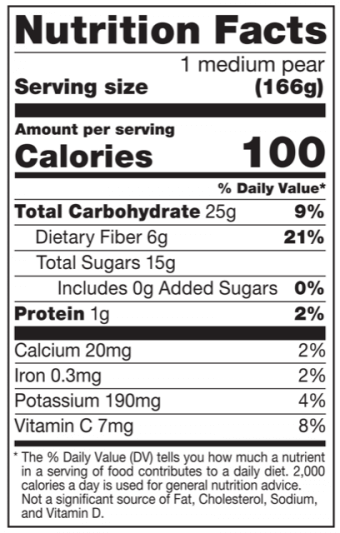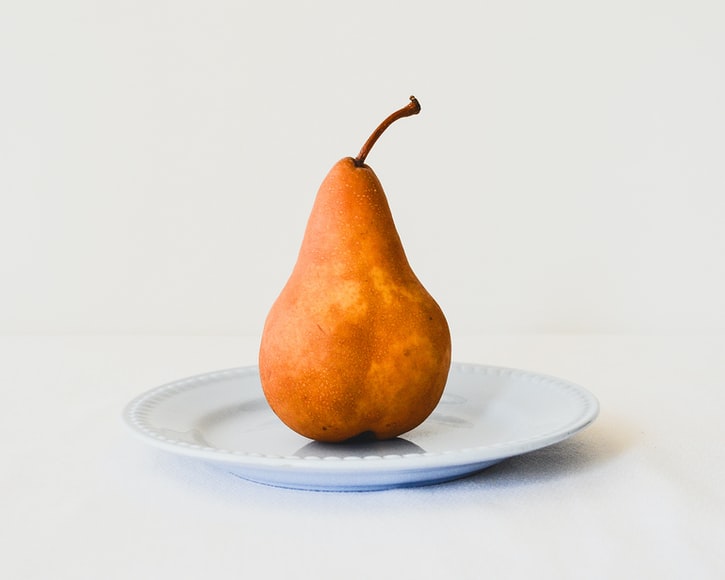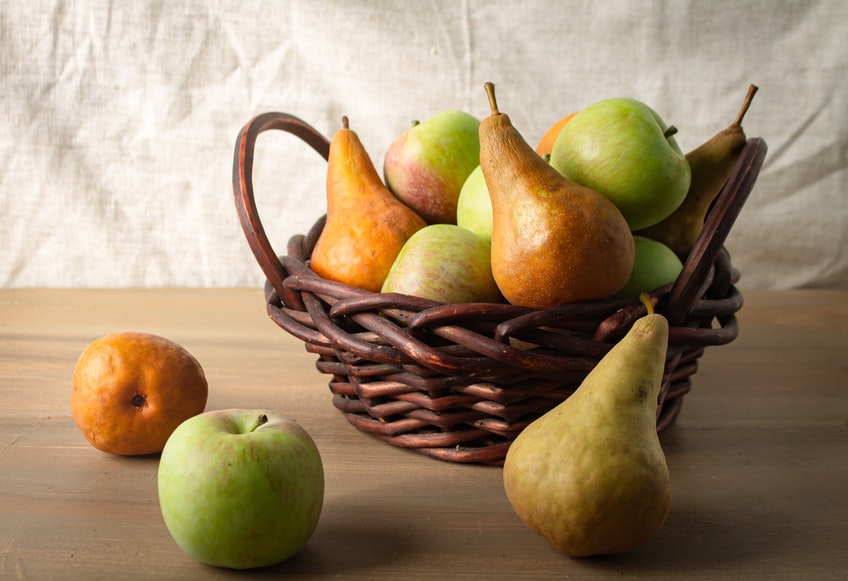The Bosc pear is a favorite among the many pears because it’s lovely and retains its shape when cooked. Another favorite is the Comice, which is small and yellowish-green with red freckles. These ripe pears make a beautiful addition to salads, regardless of their size. They’re also very low-calorie and make great desserts. This article will show you Choosing the Best Pears for Cooking.
The Bosc pear is a classic choice for cooking. Its long, slim neck and distinctively-ruffled skin make it one of the best pears for poaching. It has a juicy flavor and is one of the sweetest pears. Asian pies are also great for cooking. Their skin is slightly rough but soft, and their flesh is moist and slightly crunchy. This is a good choice if you plan to eat your pears raw or in salads.
Pear Nutrition Fact
What is A Pear?
Pear is an edible fruit that grows on the same-named tree in the rose family. Its bell form is noted, comprehensive at the bottom, tapered at the top, and its thin exterior skin and delicious meat. Pears are mainly water, so dietary fiber is the essential nutrient.
Pears are a few fruits that taste better if harvested before they’re fully ripe. It’s advisable to buy ripe pears ahead of time if you need them for a special occasion. Purchase firm pears from the grocery store and ripen them in a paper bag.
Some Pear Varieties You have to Know
Asian
Asian pears have a crisp texture that reminds some people of a cross between jicama and an apple, garnering them the nickname “apple pear.” The skin is tough and light brown, and the juice is moderate and sweet. There are numerous Asian pear types, but Hosui and Nijisseki are the most common outside Asia.
Bosc
The skin of Bosc pears is matte and mottled, with rougher patches of light brown overlying the green skin beneath. They’re incredibly aromatic when sliced into meals like a radicchio salad or baked into a pear dessert and keep their form well.
Comice
With its wide, round shape, the Comice pear falls between Asian and Bosc pears in tart fruitiness and soft, not-too-grainy texture.
Bartlett
Also known as “Williams Pears,” Bartlett’s pears are exceptionally soft and incredibly juicy. Both “red Bartlett” and “green Bartlett” are familiar names. These are the typical “bruised pear in the bottom of the lunchbox” sort that you may recall from your childhood—plenty of pear flavor but quite delicate.
Anjou
This mild, ubiquitous type is labeled “red Anjou” or “green Anjou,” although there’s no discernible difference in flavor. Red Anjou pears are slightly longer than green Anjou pears and have a burnished rusty color.
Forelle
One of the smaller, more snackable pear varieties, Forelle pears have what’s known as “lenticels,” or pear freckles, which appear in brilliant red swaths over light green flesh.
Concorde
Concorde pears have a bright green color and a long, tapering shape, similar to the Platonic pear, with a trace of blush around the most significant area. They’re incredibly delicious during the ripening period, so you’ll probably be pleased even if it’s somewhat underripe and have a faint vanilla flavor.
French Butter
As the name suggests, a delicate European cultivar that’s perfect for making pear butter. When mature, French Butter pears turn pale gold and have a creamy, delicious feel.
Taylor’s gold:
The stately Comice is supposed to be a mutant version of Taylor’s Gold, but you don’t have to compare the two to appreciate their charms. This pear was discovered in New Zealand in the 1980s, with its light golden brown russet skin and delicious aromatics.
Seckel
Seckel pears are small pears with two to three bites that fit perfectly in the palm of your hand. Because of their size and firm flesh, they’re ideal for baking or canning in recipes that call for a complete pear presentation, such as points en route or poached in red wine and served with whipped cream.
What Kind Of Pears Are Best For Cooking?

What are the Benefits of Eating Pears?
Pears are high in antioxidants, phytochemicals, and dietary fiber, and they put all of these nutrients into a 100-calorie, fat-free, cholesterol-free container. Consuming pears as part of a well-balanced, nutritious diet may help people lose weight and lower their risk of cancer, diabetes, and heart disease.
The pear varieties ideal for baking is the Bosc red pear, red and green D’Anjou pears, Bartlett, Forelle, and Concorde pears. These pear varieties are best for cooking or baking as they can hold their form and flavor well, even when cooked at high temperatures.
Pears are high in fiber, which keeps you full and keeps your heart and intestines in good shape. Pears are incredibly minimal in calories and do not include any added sugar. Combine your pear with protein for a well-rounded nutritious snack, such as cheese or nuts.
What are the Healthiest Pear to Eat?
Pears have been a popular fruit in the Western world since the time of the Romans, who brought them with them throughout their empire. Thousands of varieties exist, but only a few dozen are important commercial crops. Some are best for canning, while others are better for cooking or baking, and others are better for eating right off the tree.
While the “best” of anything is a matter of taste, raw pears are usually the sweetest and juiciest, with a smooth rather than gritty texture. As you can see in the table below, Bosc is the sweetest pear variety, while Asian is the most petite sweet. Although an Asian pear has a less sweet flavor, the other pears would most likely taste similar sweetness.
What’s the Difference Between Bartlett and Bosc Pears?
Bartlett: The juiciest of all the pears, a ripe Bartlett will drip down your chin if eaten out of hand. Bosc: The standard choice for poached pears is Boscs, which are crisp and mildly sweet, and their cinnamon-colored russeted skin makes them easily identifiable.
You can eat any pear raw, from juicy Bartletts to crisp Asian pears. But in cooking, you may want the pear to retain its shape, or you may want it to melt into a concentrated sauce.
Is it Necessary to Keep Pears Refrigerated?
Refrigeration will slow down but not stop the ripening process, allowing you enough time to incorporate fresh pears into your cuisine. Remember that pears need to ripen at room temperature, so don’t put an unripe pear in the refrigerator.
Refrigeration will slow down but not stop the ripening process, allowing you enough time to incorporate fresh pears into your cuisine. Remember that pears need to ripen at room temperature, so don’t put an unripe pear in the refrigerator.
Conclusion
The best pears for cooking can be stored on a counter for several days or up to six, and they should be used within three days of purchasing. A few varieties will change color, while others won’t. It’s important to remember that pears should never be left out. If you leave them out, they’ll become soft and may not taste very well. And while they’re delicious on their own, they’re also great for cooking. They’re available in your local supermarket from October to May.







